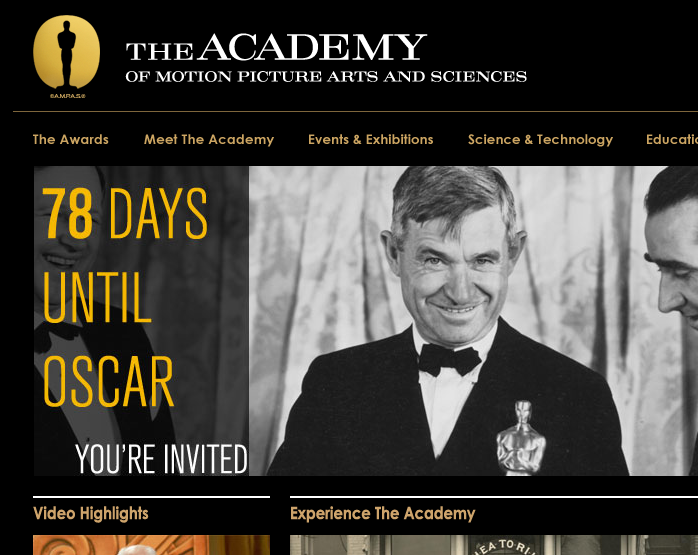• LIST-MANIA
 Sunday, December 12, 2010 at 5:33 PM by
Sunday, December 12, 2010 at 5:33 PM by  Nick DeMartino
Nick DeMartino ‘Tis the season.
Not the season for holidays. No, the season for LISTS.
We’re awash in them: Lists of top stories; Lists of best movies; Lists of best books; Lists of best this, best that.

Consider the list-makers at TIME Magazine, who earlier this week offered up 50 different lists of 2010’s “best.”
Apparently, they’ve cast themselves as a never-ending slide show of superlatives, hoping to grab some attention on the internet which is littered by ranking and enumerating everything, no matter how trivial. (Quora.com offers discourse about this phenom under the question: why do people like lists? )
Nowhere is list-mania more worshipped than in the entertainment industry.
Earlier today the American Film Institute (AFI), where I worked for more than 20 years, announced its AFI Awards, a list of the top ten movies and television program for 2010
Also today, we got the Los Angeles film critics awards and tomorrow, we’ll get the NY critics, followed with numbing regularity, hundreds of other lists released by various critics and publications, bloggers, entertainment unions and guilds — all playing a role (to a greater or lesser degree) in the entertainment industry’s biggest sweepstakes, the Oscars (Nominations announced: January 25; winners on Feb 25. Here is a sampling of awards season highlights.
I have a love/hate relationship with the Lists, the Awards, the two months of high holy days that the movie biz becomes until the Oscars is over. We all know this is simply a giant publicity mill, a venal and self-serving celebrity sausage-factory. And yes, we know that it is foolish to believe that any single work of art is “BEST.”
Nevertheless, movie list-mania is endemic, not among the casual moviegoer, the putative audience for the Oscars and for the ultimate winners, but rather among the most ardent movie freaks — those of us who truly love the experience of the movies.
We read the critics and follow the handicapping precisely because we are, like any addict, chasing that high — the experience of a transcendent cinematic moment, or even simply a great afternoon of entertainment.
Like sports fans, we movie freaks find great comfort and profound validation from the structure of statistics that accumulate during the season leading up to the big game. We argue passionately with our friends with whom we disagree. We read obsessively about the impact of each successive round of winners on the final outcome. We comb the DVD release dates to see if hard-to-view foreign or documentary titles might be released for viewing before late February. We borrow DVD “screeners” from better connected friends, even this is verboten by the piracy-obsessed studios. We monitor the box-office, knowing that Hollywood loves a picture with financial credibility.
Specialty websites can be checked compulsively to see what movie or talent is up or down. Kris Tarpley’s IN CONTENTION site begins the countdown for the coming year’s Oscars the day after this year’s. An aggregate of critics comprise a veritable morning line of handicapped odds at Gold Derby. Once the Oscar nominations have been announced, the real fun begins, culminating with on-line and F2F Oscar pools, often with considerable stakes. Once year I won several hundred bucks at somebody else’s Oscar pool.
More than the money, of course, comes the bragging rights. Just like in sports.
In my great wisdom, and with a tiny bit of luck (a lot, actually), I am master of the universe because I can best predict the outcome of a completely arbitrary list of arcane movie categories as determined by a really insanely contradictory set of rules. Oh my, ain’t I smart?
Having confessed herein that, yes, I fall victim every year to this mania, you might wonder: where the hell is my list. Well, this will be another post because, of course, I haven’t seen all the movies that everyone tells me I need to see — unlike the movie editor of the New York Times, or even a humble blogger (who probably makes more than I do as a result of the revenue generated by the hits that I provide to him!).
I do see a LOT of movies, but not enough to make my top-ten list, which all of my other movie-freak friends have been doing for years. I used to poo-poo such lists among the non-voting hoi-polloi. But no longer. Check back in January. List-mania lives, right here.
 lists movies best critics in
lists movies best critics in  Hollywood,
Hollywood,  awards,
awards,  history,
history,  indie,
indie,  lists,
lists,  movies,
movies,  opinion
opinion  Print Article
Print Article 

